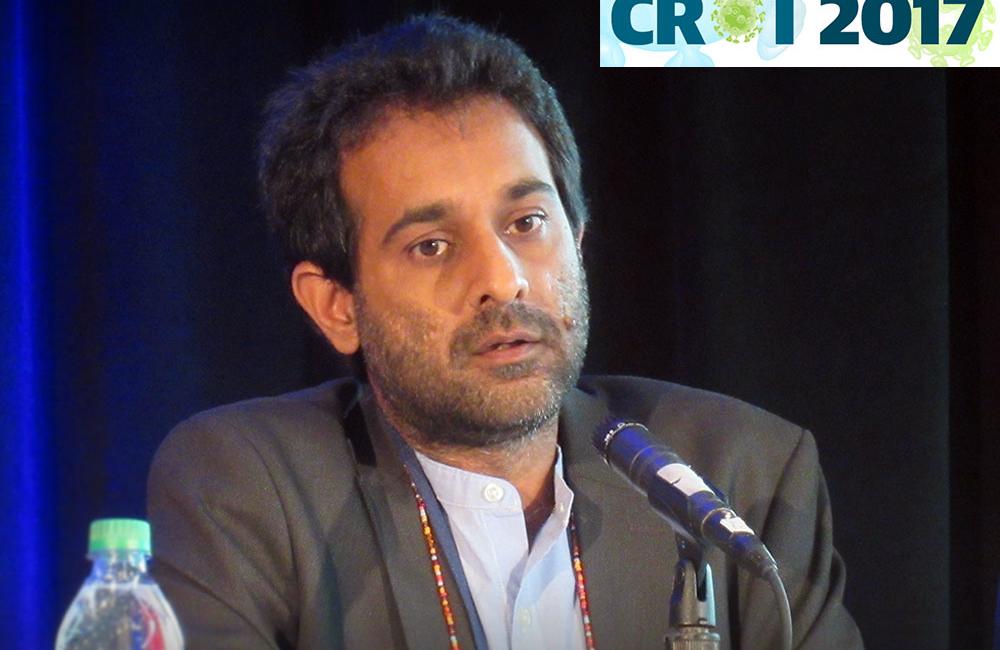
Using a point-of-care test to diagnose HIV in infants significantly improved retention in care, speeded up antiretroviral therapy (ART) initiation and increased the proportion of infants who started treatment, a large randomised study in Mozambique has found. The results were presented at the 2017 Conference on Retroviruses and Opportunistic Infections (CROI) in Seattle on Tuesday.
Improving HIV diagnosis in infants is critical for increasing the proportion of infants who receive antiretroviral treatment and for prevention of early death. HIV diagnosis in infants requires testing for HIV DNA; HIV antibodies inherited from the mother may linger for up to 18 months, leading to a false positive result, and HIV DNA may not be detectable for several weeks after birth if infection occurred during delivery or through breastfeeding.
Although the World Health Organization recommends that all infants exposed to HIV during pregnancy or delivery should receive a nucleic acid test for HIV DNA within six weeks of birth to rule out infection, there are numerous logistical barriers to achieving this target.
In order for an early diagnostic test to be carried out successfully, the infant needs to return to a health facility within two months of delivery, blood must be drawn, sent to a laboratory for testing, the result must be returned to the health facility, and the mother must then return to the health facility and be informed of the result. If the result is positive, the child ought to be offered ART. If the result is negative, the infant should be tested again at the end of the breastfeeding period to ensure that she is still HIV negative.
Many of these barriers could be overcome if the test were to be carried out at the health facility while the mother and infant wait, so that treatment could be offered immediately after the result was known. Use of point-of-care testing might also reduce loss to follow-up. Two point-of-care tests for early infant diagnosis have been approved recently by the World Health Organization. To study whether the use of one of these point-of-care tests, the Alere HIV-1/2 Detect system, would improve retention in care and treatment uptake, UNITAID and UNICEF supported a cluster-randomised study in Mozambique, conducted by Mozambique’s National Institute of Health.
The study randomised 16 health facilities to provide standard-of-care testing or to implement point-of-care testing. At the eight facilities in the standard-of-care arm 1876 infants were included in the study, and 2034 at the point-of-care intervention facilities.
The study found a substantial difference in the number of test results that were available at the health facility; whereas all of the results for infants tested by point-of-care diagnostic were available at the health facility, 19% of the results of tests carried out by the standard method failed to be returned to the facility.
A total of 8.6% of infants in the point-of-care arm and 6.7% in the standard-of-care arm tested positive for HIV. Infants in the standard-of-care arm were significantly more likely to be tested before the age of 2 months (79.2% vs 59.3%, p = 0.001), but not at any other time point.
Of the point-of-care results, 99.5% were provided to the infant’s caregiver, compared to 65% of the standard-of-care test results. Only 7.2% of the results of standard-of-care tests reached the caregiver within two months of testing, and only 47.2% within six months of testing. Results took a median of 125 days to reach caregivers after the sample was collected in the standard-of-care facilities.
ART initiation was similarly impeded by slow return of test results. Infants in the point-of care facilities were seven times more likely to start treatment within two months than those in the standard-of-care facilities. Whereas 89.7% of infants who tested positive on a point-of-care test had started treatment within two months of diagnosis, only 12.8% of those tested by the standard method had started treatment (p < 0.001). (The difference between the proportion who started treatment and the proportion with test results at two months in the standard-of-care group is explained by presumptive initiation of ART in symptomatic children.)
It took a median of 127 days after a sample was taken for a child with HIV to start treatment in the standard-of-care facilities, and one year after testing, 53 children in standard-of-care facilities still hadn’t started treatment.
Six months after testing, infants in the point-of-care arm were still around two-and-a-half times more likely to be on treatment (90.3% vs 40.2%, p < 0.001).
Even when results came back, infants in the standard-of-care arm were still less likely to have started treatment within one month of the result being disclosed (92.7% vs 77.6%, p = 0.004), and less likely to be retained on ART three months after starting treatment (61.6% vs 42.9%, p = 0.027).
UNITAID, the international drug and diagnostics purchase fund, is investing $63 million in point-of-care early infant diagnosis and HIV viral load testing in nine countries in sub-Saharan Africa, with the aim of increasing the proportion of infants who are tested, retained in care and initiated on ART. UNITAID is working with the Elisabeth Glaser Pediatric AIDS Foundation to test at least 215,000 infants.
Jani I et al. Effect of point-of-care testing on antiretroviral-therapy initiation rates in infants. Conference on Retroviruses and Opportunistic Infections (CROI 2017), Seattle, abstract 26, 2017.
View the abstract on the conference website.
View a webcast of this presentation on the conference website.
